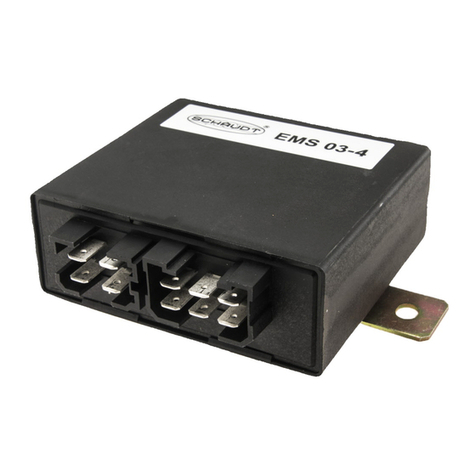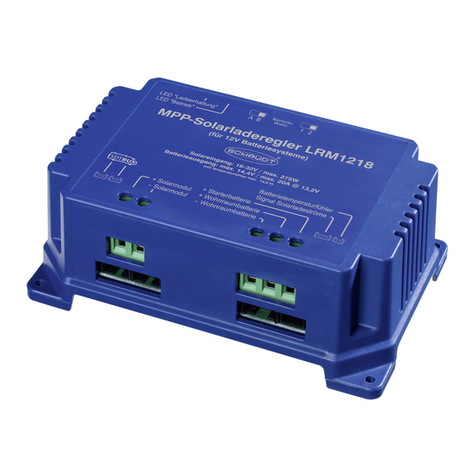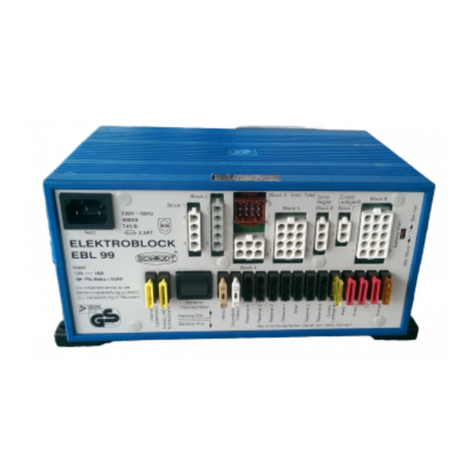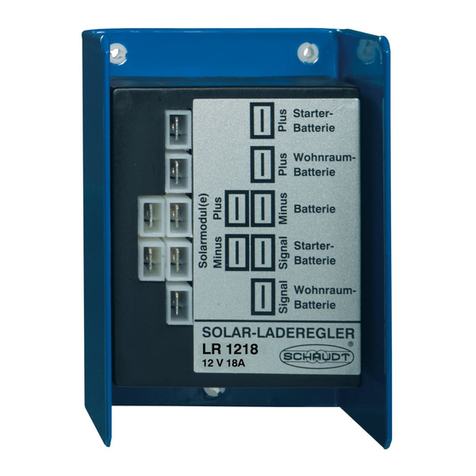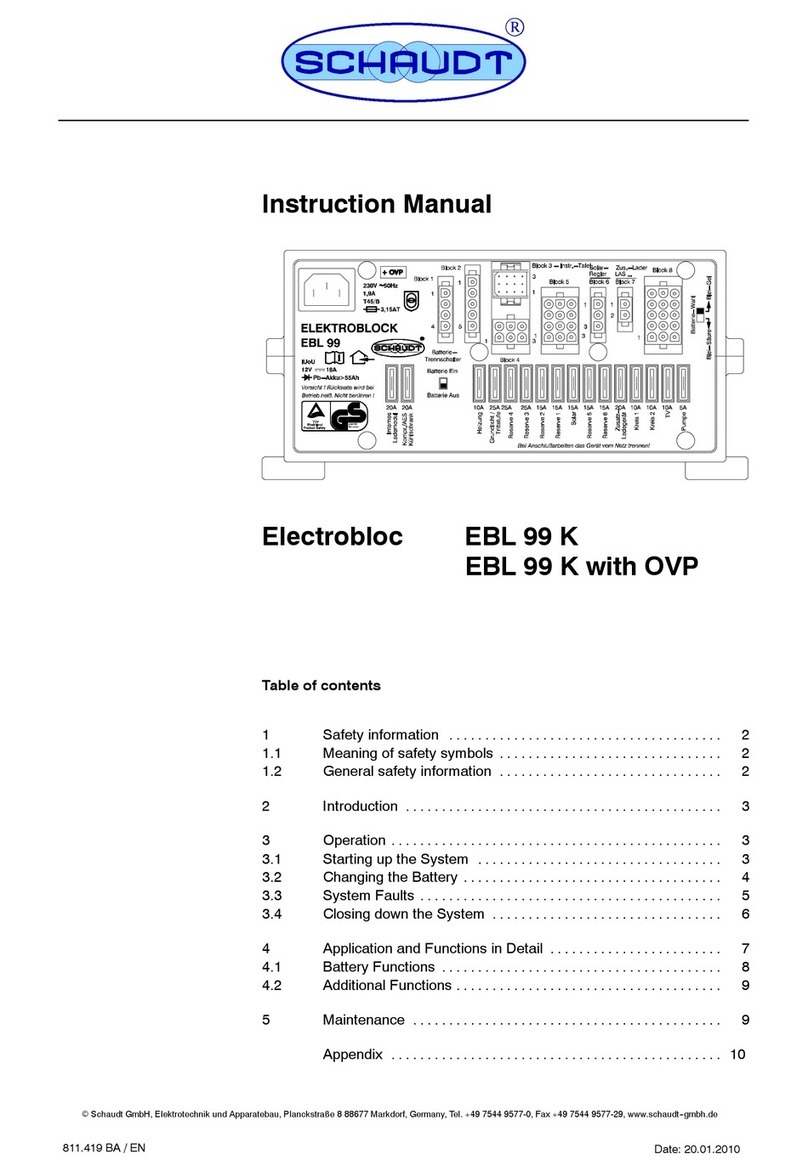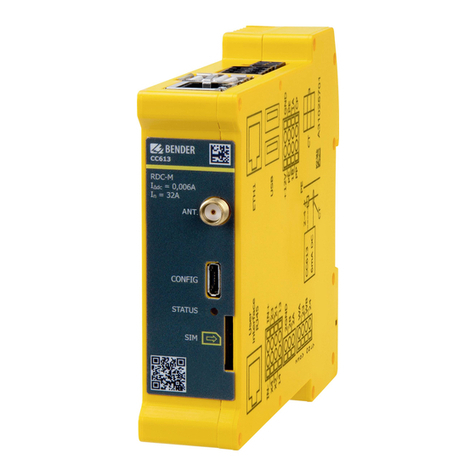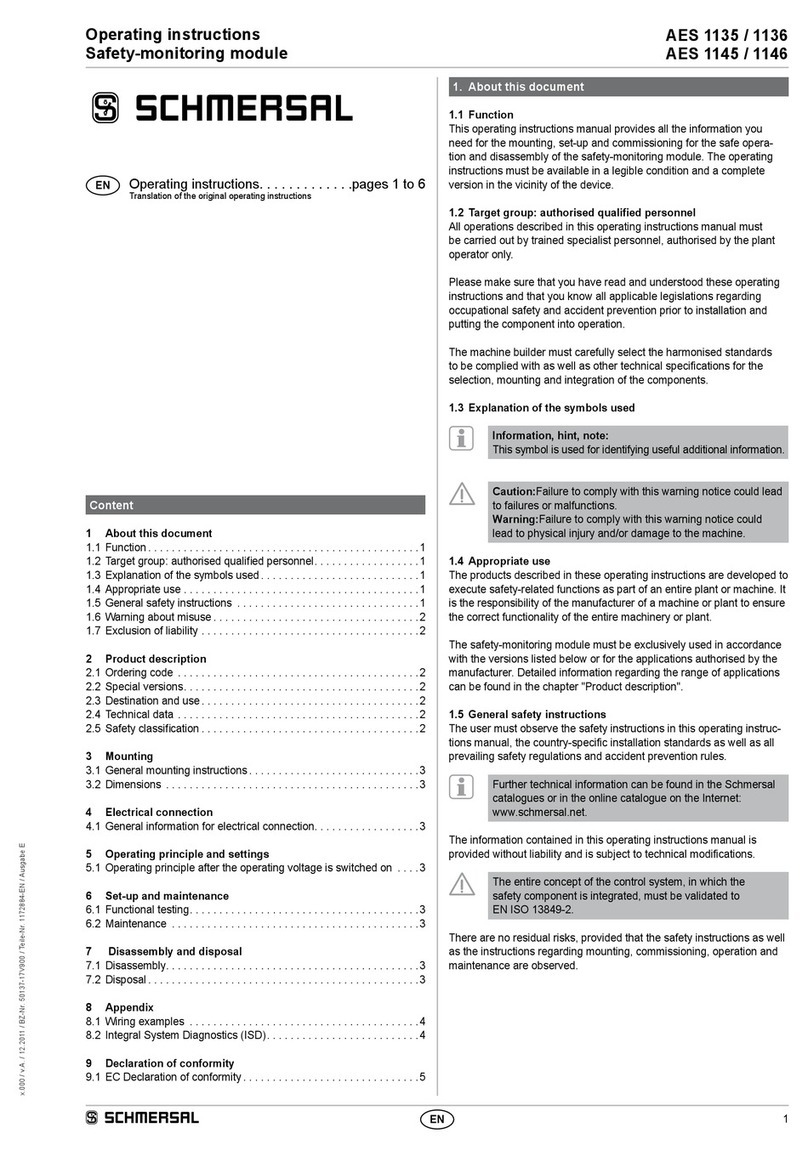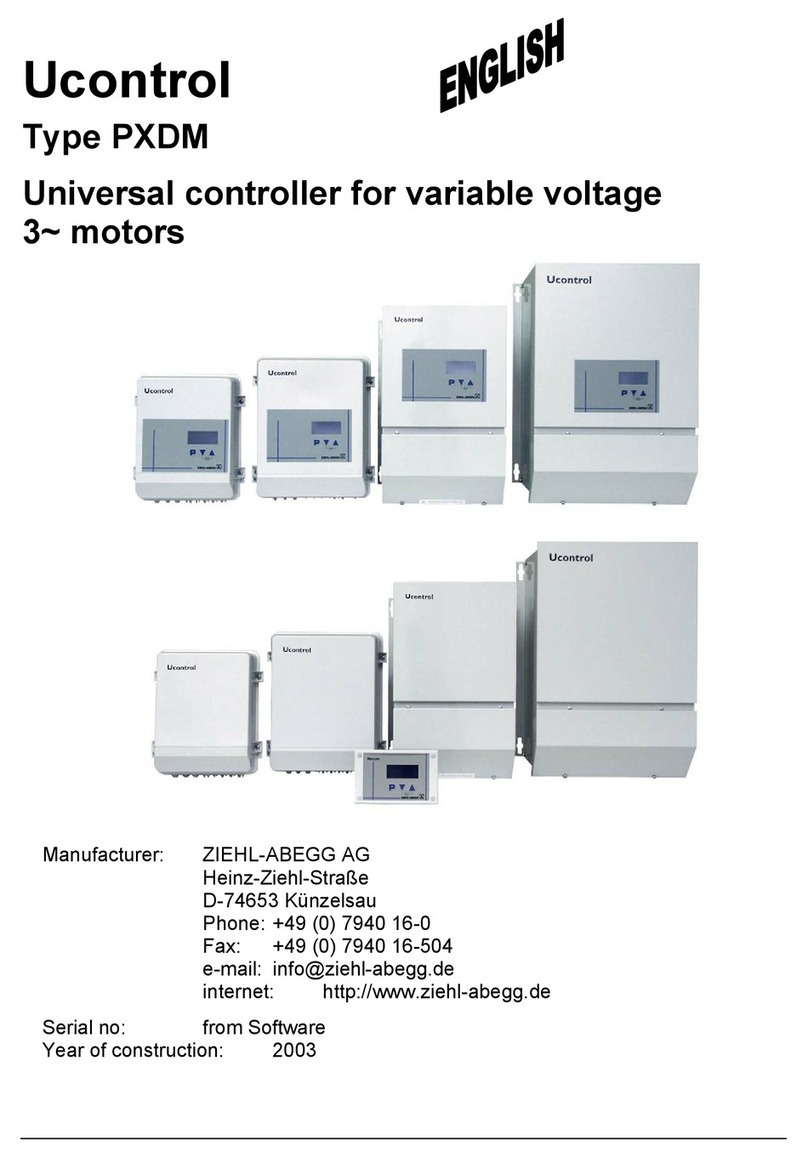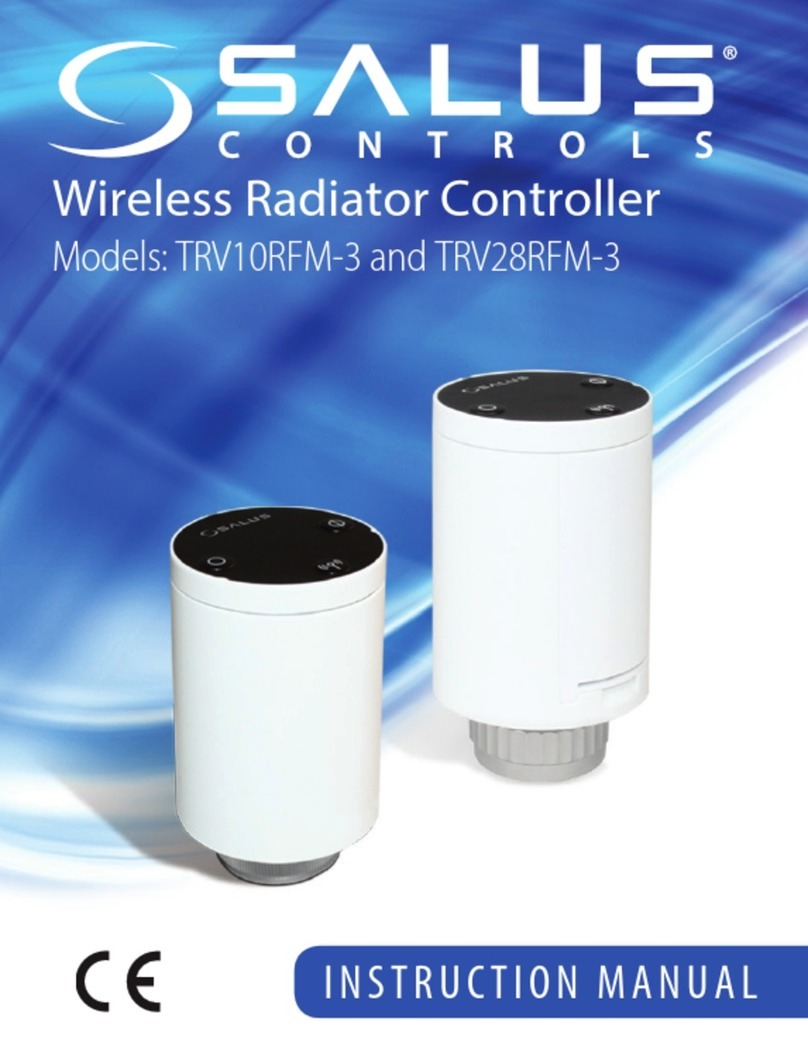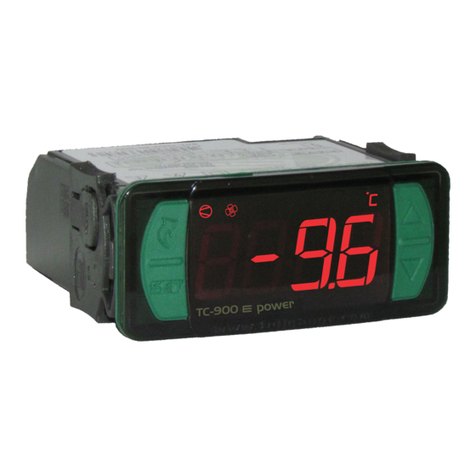Schaudt EBL 99 L User manual

Date: 04.04.2018
ESchaudt GmbH, Elektrotechnik und Apparatebau, Planckstraße 8 88677 Markdorf, Germany, Tel. +49 7544 9577-0, Fax +49 7544 9577-29, www.schaudt--gmbh.de
8110423 BA / EN
Instruction Manual
Electrobloc EBL 99 L
EBL 99 L with OVP
Table of contents
1 Safety information 2......................................
1.1 Meaning of safety symbols 2...............................
1.2 General safety information 2...............................
2 Introduction 3............................................
3 Operation 3..............................................
3.1 Starting up the System 3..................................
3.2 Changing the Battery 4....................................
3.3 System Faults 5..........................................
3.4 Closing down the System 6................................
4 Application and Functions in Detail 7........................
4.1 Battery Functions 8.......................................
4.2 Additional Functions 9.....................................
5 Maintenance 9...........................................
Appendix 10..............................................

Instruction Manual for Electrobloc EBL 99 L / EBL 99 L with OVP
2Date: 04.04.2018 8110423 BA / EN
1 Safety Information
1.1 Meaning of safety symbols
YDANGER!
Failure to heed this warning may result in death or serious injury.
YWARNING!
Failure to heed this warning may result in personal injuries.
YATTENTION!
Failure to heed this warning may result in damage to the device or connec-
ted consumers.
1.2 General safety information
The device is state-of-the-art and complies with approved safety regulations.
Nonetheless, personal injuries or damage to the device may occur if the sa-
fety instructions contained herein are not followed.
Ensure that the device is in perfect working order before use.
Any technical faults which may impact personal safety or the safety of the
device must be rectified immediately by qualified personnel.
YDANGER!
230V mains voltage carrying parts.
Danger of death due to electric shock or fire:
FDo not carry out maintenance or repair work on the device.
FIf cables or the device housing are damaged, no longer use the device
and isolate from the power supply.
FEnsure that no liquids enter the device.
YWARNING!
Hot components!
Burns:
FOnly change blown fuses when the device is completely de-energised.
FOnly replace blown fuses once the cause of the fault has been identi-
fied and rectified.
FNever bypass or repair fuses.
FOnly use original fuses rated as specified on the device.
FDevice parts can become hot during operation. Do not touch.
FNever store heat sensitive objects close to the device (e.g. tempera-
ture sensitive clothes if the device has been installed in a wardrobe).

Instruction Manual for Electrobloc EBL 99 L / EBL 99 L with OVP
3
Date: 04.04.2018
8110423 BA / EN
2 Introduction
YThis device is intended solely for use in vehicles.
This instruction manual contains important information for safe operation of
the device. Ensure you read and follow the safety instructions provided.
The instruction manual should be kept in the vehicle at all times. Ensure that
other users are made aware of the safety regulations.
YThis device is not intended to be used by persons (including children)
with limited physical, sensory or mental aptitude or lack of experience
and/or knowledge unless they are supervised by a person responsible for
their safety or have received instruction from this person as to how the
device is used.
Children are to be supervised so as to ensure they do not play with the
device.
3 Operation
The electrobloc is operated solely via the IT ... / LT ... control and switch pa-
nel connected. .
No operation of the EBL 99 L or EBL 99K with OVP electrobloc is required
for daily use (exception: the battery cut-off switch should be disabled when
the vehicle is not in use, see Section 3.4).
One-off settings only have to be configured when the battery type is chan-
ged (lead-acid or lead-gel), during initial start-up or when retrofitting acces-
sories (see Section 3.2 and the assembly instructions).
The EBL 99 L with OVP electrobloc is suitable for all applications in which
the danger of overvoltage is especially large. For example, lightning strikes
to the national grid, generator operation, poor electronic installations or trips
to distance countries.
For this, an overvoltage protection unit is fitted in the electrobloc between
the mains connection and the charge module.
3.1 Starting up the system
YATTENTION!
Incorrect electrobloc settings.
Damage to connected devices. Therefore prior to starting:
FEnsure the leisure area battery is connected.
FEnsure that the battery selector switch (Fig. 3, Pos. 10) is set to the
correct position for the battery installed.
Turn the battery cut-off switch (see Fig. 3, Pos. 12) to ”On”.
Use the main 12V switch (see instruction manual of relevant control and
switch panel) to switch on/off all the consumers and the control and
switch panel.
Overvoltage protection
OVP

Instruction Manual for Electrobloc EBL 99 L / EBL 99 L with OVP
4Date: 04.04.2018 8110423 BA / EN
Outputs are exceptions:
FFloor light/step
FHeater
FFrost protection valve
FAES/compressor refrigerator
FSpare 4
These outputs are not disabled via the main switch of the IT ... /LT control
and display panel.
Please refer to the operating instructions of the IT ... /LT... control and
switch panel for further information. .
3.2 Changing the battery
YATTENTION!
Use of incorrect battery types or incorrectly rated batteries.
Damage to the battery or devices connected to the electrobloc:
FBatteries should only be changed by qualified personnel.
FFollow the battery manufacturer’s instructions.
FOnly connect the electrobloc to 12V power supplies with rechargeable
6-cell lead gel or lead acid batteries. Do not use any unsuitable bat-
tery types.
YNormally only batteries of the same type and capacity should be used,
i.e. same as those installed by the manufacturer.
YIt is possible to swap lead acid batteries with lead gel batteries. However,
swapping from lead-gel-batteries to lead-acid-batteries is only possible in
certain cases. Contact the vehicle manufacturer for more information.
Electrically isolate the battery from the electrobloc by disabling the bat-
tery cut-off switch on the electrobloc (also see Section 3.4).
Replace battery.
After changing the battery, recheck which type of battery has been inser-
ted.
YDANGER!
Incorrect setting of the battery selector switch.
Risk of explosion due to build up of explosive gases:
FSet the battery selector switch to the correct position.
Disconnect the electrobloc from the mains before adjusting the battery
selector switch.
1
Fig. 1 Battery selector switch
Changing the battery

Instruction Manual for Electrobloc EBL 99 L / EBL 99 L with OVP
5
Date: 04.04.2018
8110423 BA / EN
Set the battery selector switch (Fig. 1, Pos. 1) to the correct position
using a thin object (e.g. a ballpoint pen):
FLead gel battery: Set the battery selector switch to ”Lead-gel”.
FLead acid battery: Set the battery selector switch to ”Lead-acid”.
Start up the system as described in Section 3.1.
3.3 System faults
In most cases of a fault in the energy supply system, a flat battery or a faulty
fuse is the cause.
If the battery is discharged, consumers can always be supplied by starting
the motor of the base vehicle.
Please contact our customer service department if you can not rectify the
fault using the following table.
If this is not possible, e.g. if you are abroad, you can have the electrobloc
repaired at a specialist workshop. Please note that the warranty becomes
void if incorrect repair work is carried out. Schaudt GmbH can not accept
liability for any damages resulting from such repairs.
Fault Possible cause Remedy
L
ivin
g
area batter
y
is not No mains volta
g
eSwitch on the automatic
L
i
v
i
n
g
a
r
e
a
b
a
t
t
e
r
y
i
s
n
o
t
charged during 230V
N
o
m
a
i
n
s
v
o
l
t
a
g
e
S
w
i
t
c
h
o
n
t
h
e
a
u
t
o
m
a
t
i
c
circuit breaker in the vehicle;
g
g
operation (battery voltage
c
o
n
s
t
a
n
t
l
y
b
e
l
o
w
1
3
3
V
)
;
check the mains voltage
constantly below 13.3
V
)Too many consumers are
switched on
Switch off any consumers
not required
Defective electrobloc Contact the customer
service department
Living area battery is
overcharged during 230V
operation (battery voltage
constantly above 14.5 V)
Defective electrobloc Contact the customer
service department
Starter batter
y
is not No mains volta
g
eSwitch on the automatic
S
t
a
r
t
e
r
b
a
t
t
e
r
y
i
s
n
o
t
charged during 230V
N
o
m
a
i
n
s
v
o
l
t
a
g
e
S
w
i
t
c
h
o
n
t
h
e
a
u
t
o
m
a
t
i
c
circuit breaker in the vehicle;
g
g
operation (battery voltage
c
o
n
s
t
a
n
t
l
y
b
e
l
o
w
1
3
0
V
)
;
check the mains voltage
constantly below 13.0
V
)Too many consumers are
switched on
Switch off any consumers
not required
Defective electrobloc Contact the customer
service department
Living area battery is not
h
d
d
i
b
i
l
Defective alternator Check the alternator
g
y
charged during mobile
o
p
e
r
a
t
i
o
n
(
b
a
t
t
e
r
y
v
o
l
t
a
g
e
No voltage on D+ input Check the fuse and wiring
o
p
e
r
a
t
i
o
n
(
b
a
t
t
e
r
y
v
o
l
t
a
g
e
below 13.0 V) Defective electrobloc Contact the customer
service department
The living area battery is
overcharged during
mobile operation (battery
voltage constantly above
14.3 V)
Defective alternator Check the alternator
The refrigerator does not
work during mobile
operation
No power supply to the
refrigerator
Check the fuse (20A of the
supply; possibly 2A of the
D+ signal) and wiring
p
Defective electrobloc Contact the customer
service department
Defective refrigerator Check the refrigerator
Starting up
the system
Flat vehicle fuses
Discharged battery --
start motor

Instruction Manual for Electrobloc EBL 99 L / EBL 99 L with OVP
6Date: 04.04.2018 8110423 BA / EN
Fault RemedyPossible cause
Solar charging does not Solar charge regulator Plug in solar charge
S
o
l
a
r
c
h
a
r
g
i
n
g
d
o
e
s
n
o
t
work
S
o
l
a
r
c
h
a
r
g
e
r
e
g
u
l
a
t
o
r
not plugged in
P
l
u
g
i
n
s
o
l
a
r
c
h
a
r
g
e
regulator
Defective fuse or wiring Check fuse and wiring
Solar charge regulator
defective
Check solar charge
regulator
12V supply does not
w
o
r
k
i
n
t
h
e
l
i
v
i
n
g
a
r
e
a
12V main switch for the
l
i
v
i
n
g
a
r
e
a
b
a
t
t
e
r
y
i
s
12V main switch for the
l
i
v
i
n
g
a
r
e
a
b
a
t
t
e
r
y
m
u
s
t
b
e
wor
k
i
nt
h
e
l
i
v
i
ng area
l
i
v
i
ng area
b
attery
i
s
switched off
l
i
v
i
ng area
b
attery must
b
e
switched on
Not all plugs or fuses are
p
l
u
g
g
e
d
i
n
t
o
t
h
e
plug in all plugs and fuses
(
c
o
r
r
e
c
t
v
a
l
u
e
s
!
)
t
o
t
h
e
p
l
ugge
d
i
nto t
h
e
electrobloc
(
correct va
l
ues
!
)
to t
h
e
electrobloc
D
e
f
e
c
t
i
v
e
f
u
s
e
o
r
w
i
r
i
n
g
C
h
e
c
k
f
u
s
e
a
n
d
w
i
r
i
n
g
D
e
f
ect
i
ve
f
use or w
i
r
i
ng
C
h
ec
k
f
use an
d
w
i
r
i
ng
Defective electrobloc Contact the customer
service department
YIf the device becomes too hot due to excessive ambient temperature or
lack of ventilation, the charging current is automatically reduced. Always
prevent the device from overheating nevertheless.
YIf the automatic shutdown mechanism of the battery monitor is triggered,
fully charge the living area battery.
3.4 Closing down the system
The battery is isolated by switching off the battery cut-off switch.
YATTENTION!
Total discharge.
Damage to the living area battery:
FFully charge the living area battery before and after closing down the
system. (Connect vehicle to the mains with an 80Ah battery at least
12 hours and with a 160Ah battery at least 24 hours).
Disconnect the living area battery from the 12V power supply if the motor-
home is not used for a longer period (during the winter for example).
Fully charge the living area battery before closing down the system.
Switch off from the main switch of the IT ... /LT... control and switch pa-
nel.
Turn the battery cut-off switch (see Fig. 3, Pos. 12) to ”Off”. The following
connections are isolated from the living area battery:
FAll 12V consumers
FFrost protection valve
FControl and switch panel
The living area battery is then protected against total discharge. This only
applies if the battery is intact. Follow the battery manufacturer’s instructions.
YIf the living area battery is isolated from the electrobloc with the battery
cut-off, the frost protection valve of the combination heating opens. A
loss of water is possible (see operating instructions of the combination
heating).
Closing down

Instruction Manual for Electrobloc EBL 99 L / EBL 99 L with OVP
7
Date: 04.04.2018
8110423 BA / EN
4 Application and functions in detail
The electrobloc is the central power supply unit for all 12V consumers in the
vehicle’s electrical system. It is usually located in a cupboard or storage area
and is accessible from the front in order to change fuses.
EBL 99 L
IT.../LT...
+--
+--
Control and
display panel
Electrobloc
230V AC
12V consumers Living area battery
Starter battery
Lighting
Pump
Heater
etc.
EBL 99 L with OVP
Fig. 2 On-board power supply system
The EBL 99 L electrobloc contains:
Fa charge module for charging all connected batteries
Fthe complete 12 V distribution
Fthe fuses for the 12V circuits
Fa battery monitoring module
FControl and monitoring functions
The EBL 99 L with OVP electrobloc contains in addition:
Fovervoltage protection OVP which isolates the electrobloc from the mains
in the event of sudden voltage peaks in the 230V supply.
An IT ... or LT ... control and switch panel must be connected for operation.
These devices control the electrical functions in the vehicle’s living area, inc-
luding accessories.
There is also an option to connect an additional charger and a solar loading
regulator.
Flat vehicle fuses protect the various circuits. The D+ output is an exception.
FExcess temperature
FOverload
FShort circuit
230 V AC 10 %, 47 to 63 Hz sinusoidal, protection class I
12V outputs may be loaded with max. 90% of the rated current of the re-
spective fuse (also see front panel).
Modules
System devices
Protective circuits of the
charging module
Mains connection
Current-carrying
capacity

Instruction Manual for Electrobloc EBL 99 L / EBL 99 L with OVP
8Date: 04.04.2018 8110423 BA / EN
4.1 Battery functions
6-cell lead acid or lead gel batteries, 55 Ah and above
Simultaneous charging of the starter battery and the living area battery via
the alternator, parallel connection of the batteries via a cut-off relay
The battery is isolated with the battery cut-off switch.
This prevents the living area battery from slowly discharging due to closed
circuit current while the vehicle is not in use.
With the switching option with the battery selector switch, the optimal char-
ging of the two types of batteries, lead-gel and lead -acid, is guaranteed (ap-
prox. 5 -- 20mA)
With control and switch panel: approx. 5 -- 20mA
(depending on the control and switch panel used) under the following condi-
tions:
FNo mains connection
FLiving area battery voltage 12.6V
F12V main switch ”OFF”
Living area battery
Characteristic charging curve IUoU
End of charge voltage 14.3V
Charging current 18A
Voltage for float charge 13.8V with automatic switch function
Starter battery
Charging current float charge max. 2A
The battery monitor compares the current of the living area battery to a refe-
rence current. As soon as the battery current drops below 10.5V, all 12V
consumers are switched off via main switch relays 1 and 2.
Only the frost protection valve continues to be powered.
The automatic disconnector is not triggered by short-term low voltage (shor-
ter than 2 seconds), caused by high current when switching on consumers.
If an overload or an insufficiently charged living area battery causes the vol-
tage to fall so low that the automatic disconnector is triggered, any non-es-
sential consumers should be switched off.
If need be, the 12V supply can begin operation for a short time. For this,
switch on the 12V main switch on the control and switch panel.
However, if the battery current remains below 11.0V, the 12V supply can not
be switched on again. Fully charge the living area battery as soon as possi-
ble. For more information, see the description of ”battery voltages”.
Suitable batteries
Battery charging
during mobile operation
Battery isolation
Battery selector switch
Standby current from
living area battery
(without consumer
currents)
Battery charging via
Mains connector
Automatic disconnector

Instruction Manual for Electrobloc EBL 99 L / EBL 99 L with OVP
9
Date: 04.04.2018
8110423 BA / EN
4.2 Additional functions
This relay supplies the AES/compressor refrigerator with power from the
starter battery when the vehicle engine is running and the D+ connection is
live. An AES refrigerator is powered by the living area battery when the vehi-
cle engine is not running.
This feature provides an automatic max. 2 A float charge for the starter bat-
tery when the 230V mains is connected to the electrobloc.
5Maintenance
The EBL 99 electrobloc is maintenance free.
Clean the electrobloc with a soft, slightly damp cloth and mild detergent. Ne-
ver use spirit, thinners or similar substances. Do not allow liquids to enter
the electrobloc.
No part of this manual may be reproduced, translated or copied without ex-
press written permission.
Automatic switch
function for
AES/compressor
refrigerator
Mains charging of the
Starter battery
Cleaning
E

Instruction Manual for Electrobloc EBL 99 L / EBL 99 L with OVP
10 Date: 04.04.2018 8110423 BA / EN
Appendix
A EC Declaration of Conformity
Schaudt GmbH hereby confirms that the design of the device complies with
the relevant regulations.
The original EC Declaration of Conformity is available for reference at any
time.
Schaudt GmbH, Elektrotechnik & Apparatebau
Planckstraße 8
88677 Markdorf
Germany
B Special fittings/accessories
Schaudt IT ... / LT ... switch panel (required for operation)
Schaudt battery charger LAS ... with max. 18 A charge current, including
suitable connection cable (MNL).
Schaudt Solar charge regulator type LR ... for solar modules with a total cur-
rent of 14A with 3-pole connection plug and connection cable
C Customer service
Schaudt GmbH, Elektrotechnik & Apparatebau
Planckstraße 8
D-88677 Markdorf
tel.: +49 7544 9577-16
email: kundendienst@schaudt-gmbh.de
web: www.schaudt.gmbh
Returning a defective device:
Fill in and enclose the fault report, see Appendix D.
Send it to the addressee (free of charge).
Manufacturer
Address
Switch panel
Additional charger
Solar charge regulator
Customer service
address
Send in the device

Instruction Manual for Electrobloc EBL 99 L / EBL 99 L with OVP
11
Date: 04.04.2018
8110423 BA / EN
D Fault report
In the event of damage, please return the defective device together with the
completed fault report to the manufacturer.
Device type: _______________________
Item no.: _______________________
Vehicle: Manufacturer: _______________________
Model: _______________________
Own installation? Yes -No -
Upgrade? Yes -No -
Following fault has occurred (please tick):
-Electrical consumers do not work -- which?
(please specify below)
-Switching on and off not possible
-Persistent fault
-Intermittent fault/loose contact
Other remarks:

Instruction Manual for Electrobloc EBL 99 L / EBL 99 L with OVP
12 Date: 04.04.2018 8110423 BA / EN
E Design
11
23 45 678
12
9
13
1
14
10
15
Fig. 3 Layout of EBL 99 electrobloc (front)
1 Mains connector
2 Connection block, refrigerator
3 Connection block, refrigerator supply D+, battery sen-
sor/control lines
4 Connection block, frost protection valve, heating and
floor light/steps
5 Connection, IT ... / LT ... control and switch panel
6 Connection block, reserve
7 Connection block, solar regulator
8 Connection block, additional charger
9 Connection block TV, pump, consumers
10 Selector switch acid/gel battery
11 Flat vehicle fuses
12 Battery cut-off switch
13 Housing
14 Assembly flaps
15 Sticker, + OVP (only for EBL 99 L with
OVP)
Starter
Battery
+NegativeBattery
-- +
Living area
123
Fig. 4 Layout of EBL 99 electrobloc (rear)
1 Connection, living area battery
2 Connection, earth
3 Connection, starter battery

Instruction Manual for Electrobloc EBL 99 L / EBL 99 L with OVP
13
Date: 04.04.2018
8110423 BA / EN
F Block diagram/connection diagram
lead gel/
lead acid
Selector switch
5A
10A
10A
25A
15A
20A
20A
10A
50A
50A
10A 2A
2A
20A
(only for LR 02)
2
max. 10m
each 1.5mm
5
2
1
3
4
4
1
3
2
10
7
3
8
11
2
5
12
9
1
4
6 Mains indicator
6
MNL socket cap 4F -- block 1
*
Refrigerator lines are
+ sensor, living area batt.
regulator
Solar
6
3
2
5
1
4Frost protection valve +
Refrigerator relay
A1
A2
HS relay 60A
12
4
1
5
10
2
7
6
8
11
3
9
6
3
22
11
4
3
2
3
1
4
2
5
1
12
14
9
2
8
3
7
4
13
1
11
5
10
6
1515
5
1
11
4
13
7
10
3
8
2
14
6
12
Not assigned
9
11
6
8
7
3
2
--
+
12
9
10
5
4
1
5
2
A3
A7
A12
A11
A4
A10
A9
A8
A5 A6
771.461
Heater --
+
MNL socket cap 6F -- block 4
4
1
max.15A
max.15A
max.15A max.15A
max. 25A
max. 25A
Minus, starter battery.
Minus, living area battery must be connected externally to
(off)
Cut--off switch
Battery
Negative living area battery
+ Starter battery (Batt.1)
+ living room batt. (Batt.2)
E20--3F
MNL socket cap 3F -- block 6
A
--
(E)
charge
3
1
2
3
1
2
TV
+
--
HS relay 60A
Spare 5
--
+
MNL socket cap 2F block 7
Fridge
Negative, starter battery for refrigerator*
Negative, refrigerator
+ Compressor/AES refrigerator
+ Absorb. refrigerator *
Negative, living area batt. sensor
Minus sensor living area battery (batt. 2)
Module BW 99--2
Cond. pl. KPL EBL 99--1
--
+
+
Step
Floor light/
+
--
Solar cell
+
--
Spare 2
Spare 3
+
--
Spare 4 +
--
--
+
MNL socket cap 12F -- block 5
+Circuit 2
--
+Circuit 1
--
+Pump
--
Spare 6
+
MNL socket cap 15F -- block 8
--
Not assigned
Not assigned
Not assigned
--
+Spare 1
10
7
3
D+ input
D+ point
MNL socket cap 5F -- block 2
Shunt
cut--off relay
Battery
+ Auxiliary charger
Negative charger
+ Starter batt. for refrigerator*
MR pin cap 12F block 3
lines.
to routed to battery poles isolated
from other battery
11
8
1
4 Shunt battery
Shunt consumer
+ sensor, living area battery (batt. 2)
+ Starter battery (Batt.1)
9
5
12
12V indicator
12V ON
12V OFF
2
+
A14 A13
Low power device socket
Mains 230V~50Hz
A16
A17
A15
LASO 1218--6
S 1218--5
A8 A7 A9
A14
A15
A11
A12
A3
A1
A2
OVP 01*
Starter battery
Charging relay
20A
Relay
2.5A
PolySwitch
2.5A
PolySwitch
2.5A
PolySwitch
2.5A
PolySwitch
* Only for EBL 99 L with OVP

Instruction Manual for Electrobloc EBL 99 L / EBL 99 L with OVP
14 Date: 04.04.2018 8110423 BA / EN
(blank page)
This manual suits for next models
1
Table of contents
Other Schaudt Controllers manuals
Popular Controllers manuals by other brands

Scaletron
Scaletron 1099 instruction manual
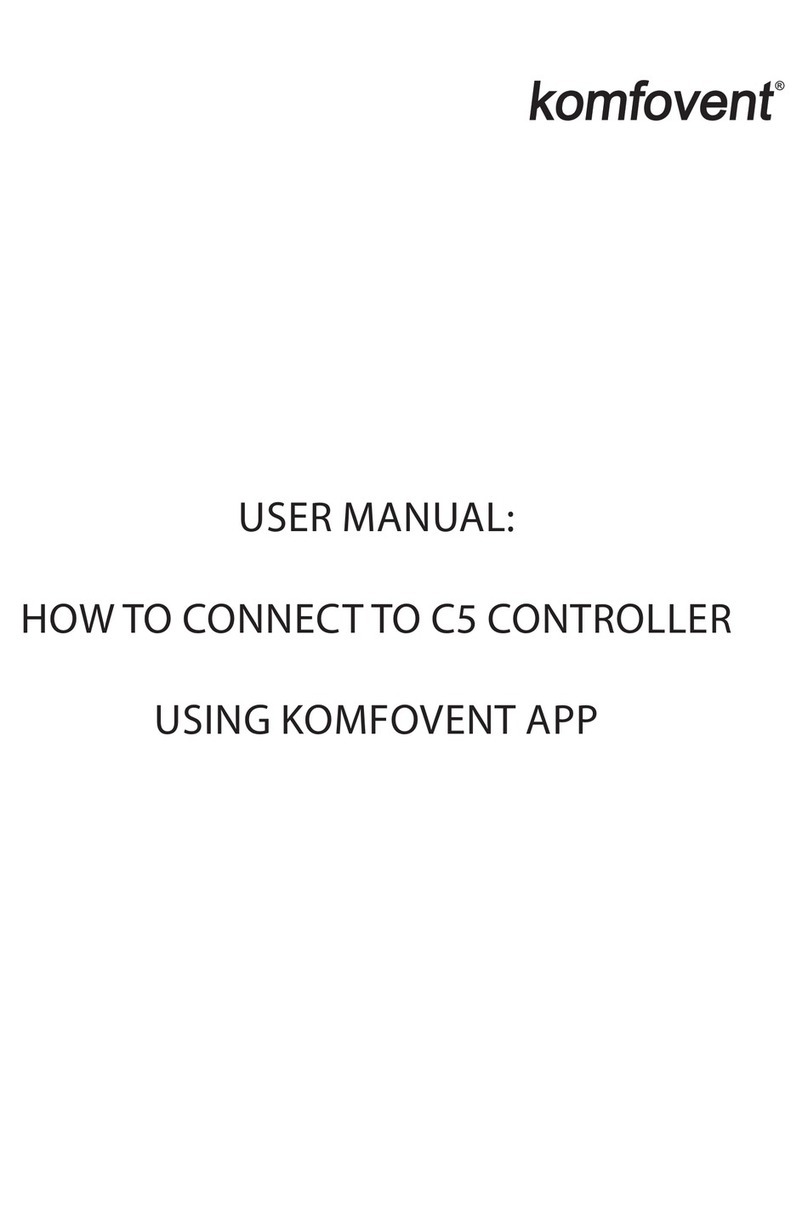
Komfovent
Komfovent C5 user manual
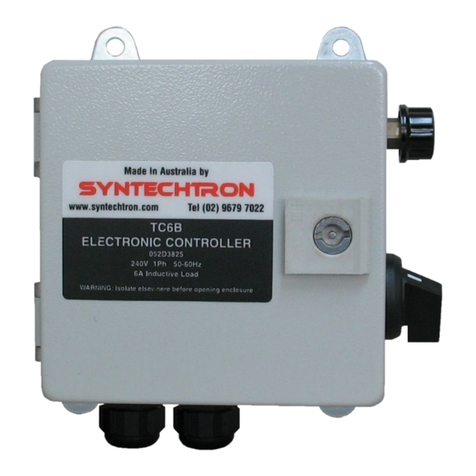
SYNTECHTRON
SYNTECHTRON TC6B Installation, operation & maintenance manual
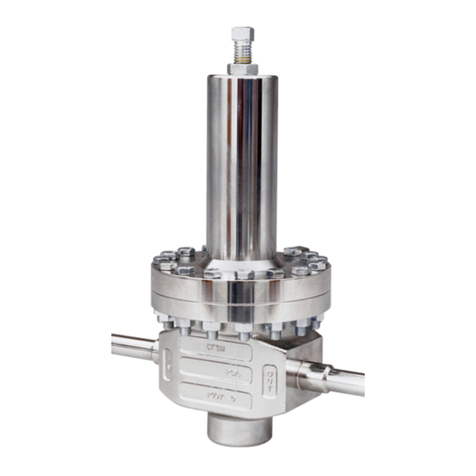
cashco
cashco CA5 Installation, operation & maintenance manual
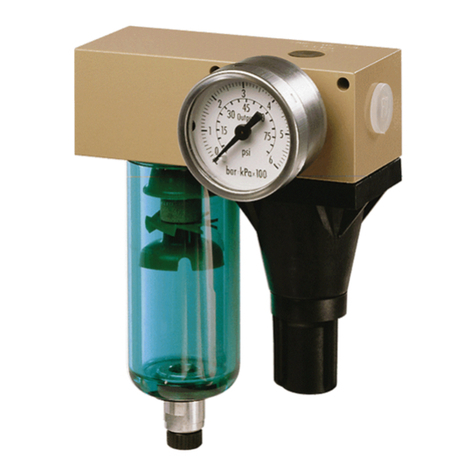
Samson
Samson 4708-5352 Mounting and operating instructions
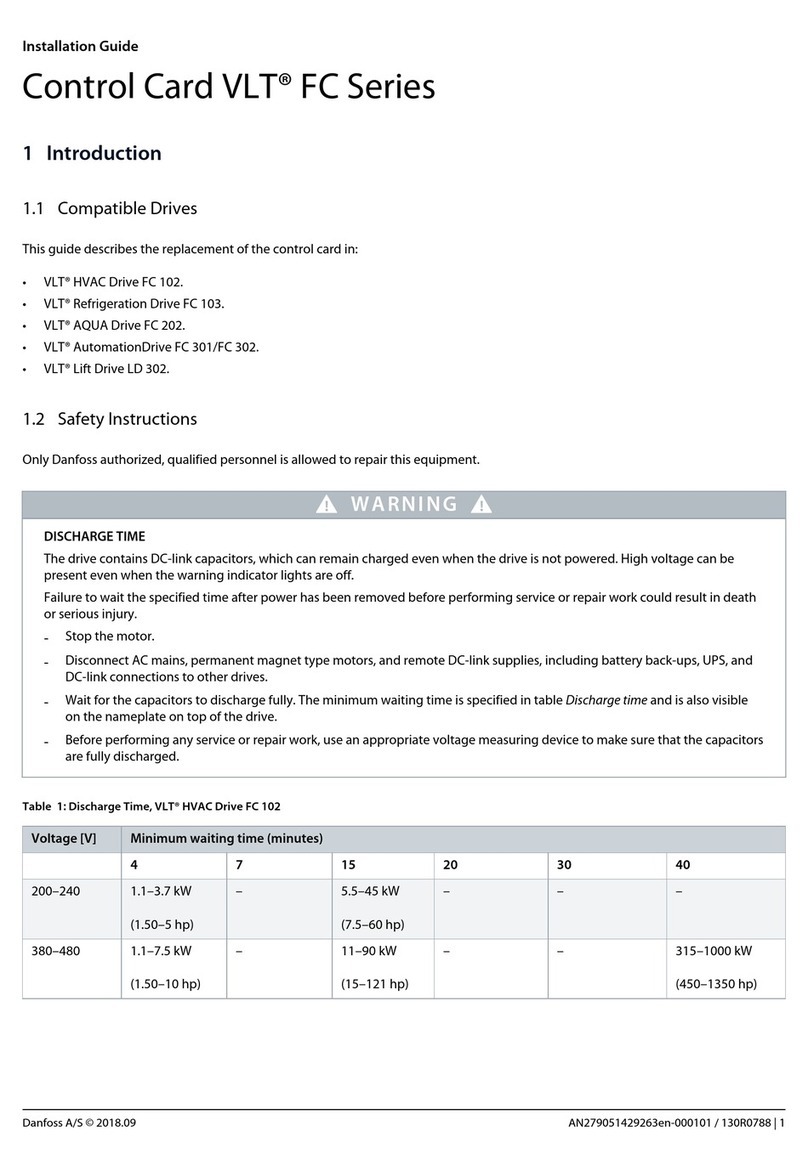
Danfoss
Danfoss VLT FC Series installation guide

Steca
Steca Suntana Instructions for installation and operation
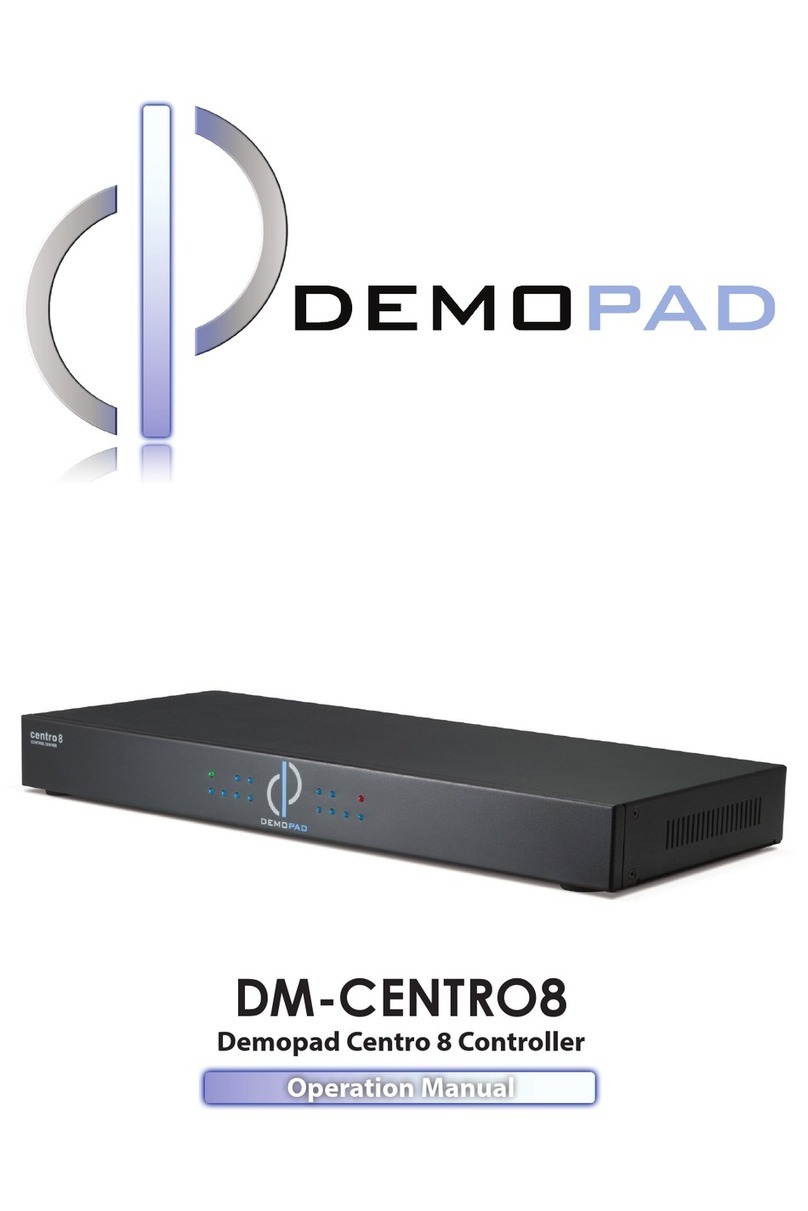
DemoPad
DemoPad DM-CENTRO8 Operation manual
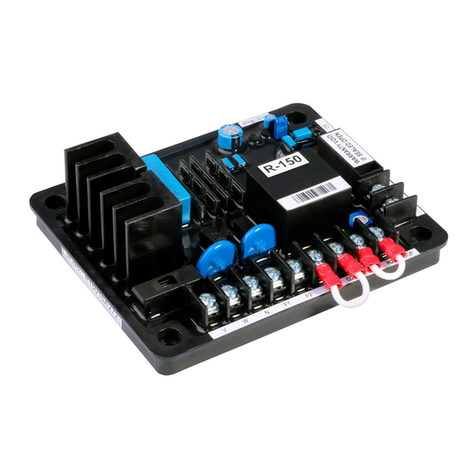
Nidec
Nidec Leroy-Somer R150 Installation and Maintenance

sauter
sauter flexotron 700 user manual
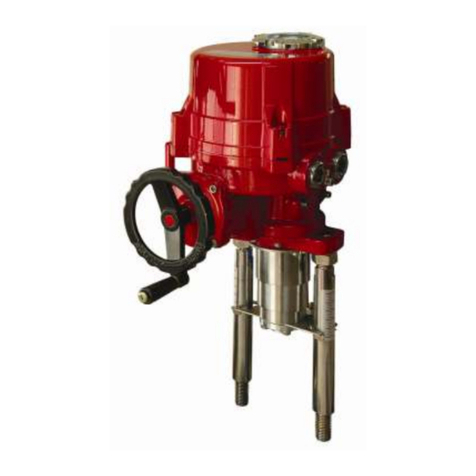
Jflow controls
Jflow controls IQL Installation & operation manual

Dräger
Dräger Regard 3900 Installation, operation and maintenance guide
